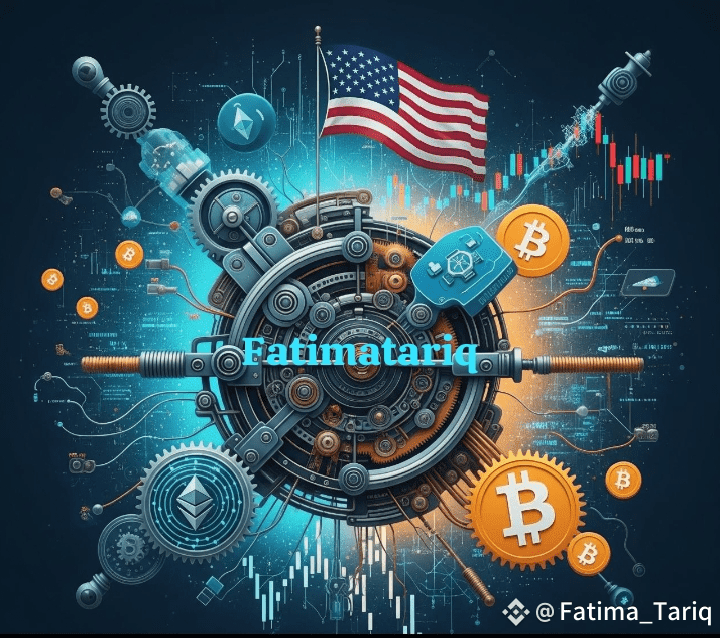
The Trump Administration's Multifaceted Response
The current U.S. regulatory landscape for digital assets is undergoing a significant transformation, marked by a shift towards a more crypto-friendly stance under the Trump administration. This new approach, outlined in a series of executive orders and supported by key legislative efforts, aims to provide regulatory clarity and foster innovation in the digital asset space.
1. Executive Orders and Administrative Initiatives
President Trump's administration has taken several decisive steps to reorient federal policy towards supporting the digital asset industry.
Executive Order 14178: Strengthening American Leadership in Digital Financial Technology: This order, issued in January 2025, signals a clear departure from previous "regulation by enforcement" approaches. It establishes the administration's policy to promote the responsible growth of cryptocurrencies, protect public blockchain networks, and champion the U.S. dollar through the development of legitimate dollar-backed stablecoins.
The President's Working Group on Digital Asset Markets: Created by Executive Order 14178, this group is tasked with recommending regulatory and legislative proposals to advance the administration's goals. A key outcome of their work has been a focus on ending policies like "Operation Choke Point 2.0" and promoting a predictable banking regulatory framework for digital assets.
Strategic Bitcoin Reserve: In March 2025, an executive order established the Strategic Bitcoin Reserve and a U.S. Digital Asset Stockpile. This initiative, which aims to create a "digital Fort Knox" for the country, is designed to acquire and maintain a stockpile of digital assets, primarily from criminal and civil proceedings, and to develop strategies for further acquisition. This move, while supported by many in the crypto community, has faced criticism from some who question its purpose and potential market influence.
2. Key Legislative Efforts: The GENIUS Act
The most significant legislative development has been the passage of the Guiding and Establishing National Innovation for U.S. Stablecoins (GENIUS) Act. Signed into law by President Trump on July 18, 2025, this landmark bill is the first comprehensive federal legislation on stablecoins.
Regulatory Framework: The GENIUS Act creates a dual-track framework for stablecoin issuers, allowing them to operate under either a federal or a certified state-level regulatory regime. It limits the issuance of stablecoins to insured depository institutions or approved non-bank financial institutions.
1:1 Reserve Backing: A core provision of the Act is the requirement for all stablecoin issuers to maintain a 1:1 reserve backing for their stablecoins using low-risk assets like U.S. dollars and Treasury bills. This establishes a clear standard for transparency and stability.
Consumer Protection: The Act mandates public disclosures of redemption policies, reserve compositions, and all associated fees, providing a new layer of consumer protection. It also creates a "super priority claim" for stablecoin holders in the event of an issuer's bankruptcy, ensuring they are first in line to reclaim their assets.
3. The Ongoing Debate on Jurisdiction: SEC vs. CFTC
A long-standing point of contention in the crypto space has been the jurisdictional overlap and confusion between the Securities and Exchange Commission (SEC) and the Commodity Futures Trading Commission (CFTC).
The FIT21 Act: While the GENIUS Act passed, the Financial Innovation and Technology for the 21st Century (FIT21) Act, which passed the House in 2024, is still awaiting a full vote in the Senate. This bill aims to clarify the roles of the SEC and CFTC by establishing a clear test for when a digital asset is a "digital commodity" (regulated by the CFTC) or a "restricted digital asset" (regulated by the SEC). A key part of the bill is the "decentralization" test, which would shift jurisdiction from the SEC to the CFTC once a blockchain network is deemed sufficiently decentralized.
Increased Coordination: The Trump administration has encouraged greater cooperation between the two agencies. The CFTC, for instance, has launched a "Crypto Sprint" to implement recommendations from the White House's digital asset working group, and a new initiative to allow spot crypto trading on registered futures exchanges. Similarly, the SEC has formed a "Crypto 2.0" task force to modernize its rules and provide clarity for the industry.
4. The Role of Key Figures
The new policy direction is being shaped by several key figures, including David Sacks, the White House's Special Advisor for AI and Crypto. A prominent venture capitalist with deep roots in the tech industry, Sacks has been appointed to lead the President's Working Group on Digital Asset Markets. His role underscores the administration's commitment to bringing an industry-insider perspective to policy-making and fostering an environment of innovation.
Conclusion
The U.S. approach to cryptocurrency regulation is moving away from a hands-off or enforcement-heavy model towards a more proactive, legislative-based framework. The passage of the GENIUS Act for stablecoins, the renewed focus on regulatory clarity, and the appointment of key advisors like David Sacks signal a new era for digital assets in the United States, with a stated goal of strengthening the country's position as a global leader in financial innovation.
Dont copy it ✍🏻 ❌
#CryptoRegulation #DigitalAssets #USPolitic #CFTCCryptoSprint